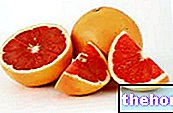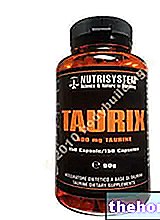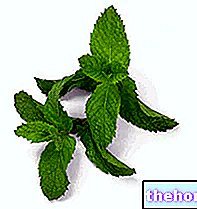
About Nitric Oxide Booster - EAS
Nitric Oxide Booster - EAS
Food supplement based on Arginine alpha keto-glutarate and niacin
FORMAT
Bottle of 120 tablets
COMPOSITION
Arginine alpha keto-glutarate (A-AKG)
Niacin
Emulsifiers: E460 (cellulose), E463 (Hydroxy-propylcellulose), soy lecithin.
CONTAINS SOY
One dose (one tablet) contains: L-Arginine alpha ketoglutarate 1000 mg
Niacin 4.5 mg
L-Arginine alpha keto glutarate (AAKG) - L arginine salt obtained synthetically by combining two molecules of arginine with one of alpha keto glutarate. This alpha keto acid is very important from a metabolic point of view, as it represents an intermediate between anabolic and catabolic reactions, being able to vary its metabolic fate according to physiological needs. In case of energy need, alpha keto glutarate can effectively replenish the krebs cycle, but at the same time it can be part of the synthesis of glutamate, glutamine, proline and of course also arginine. synthesized endogenously, they make it a conditionally essential amino acid. In addition to protein synthesis, arginine is part of the synthesis of creatine, the gluconeogenic process, the synthesis of collagen, the detoxification process from ammonia, the strengthening of the immune defenses and the much discussed ability to increase the secretion of GH. , arginine is part of another very important process, which is the production of nitric oxide. This gas is produced from arginine by various isoforms of the enzyme nitric oxide synthetates (NOS). At the muscle level, the constitutive forms of this enzyme, ie the endothelial isoform and the neuronal isoform, in a calcium dependent manner, guarantee the correct production of nitric oxide, supporting on the one hand the vasodilatory process, which guarantees a better flow of oxygen and nutrients, and on the other hand an increase in the capacity of the muscle fibers to absorb nutrients.
It should be considered that there is also a third isoform, called inducible, which is the basis of the cytotoxic action that occurs following the penetration of pathogens, and which is potentially dangerous, as it exposes the organism to oxidative damage.

Niacin - vitamin also known as vitamin PP or vitamin B3; it is present in vegetables (mainly whole grains), in the form of nicotinic acid, and in animals (meats), in the form of nicotinamide. Both forms are absorbed at the gastric and intestinal level through a transport facilitated with sodium, and conveyed to the various tissues, some of which can obtain it from tryptophan and lysine. This molecule is part of the constitution of NAD and NADP, two very important electron acceptors, involved in numerous metabolic reactions.
In this case, the role of cofactor of the enzyme nitric oxide synthetase should be emphasized.
Furthermore, niacin appears to be involved in the protection of pancreatic beta cells in type I diabetes, in the improvement of the lipid profile and in the protection of cardiovascular diseases (at high doses).
Deficiencies of these vitamins, very rare, give rise to a pathological condition known as pellagra, characterized by dermatitis, mental and cognitive disorders.
For an adult man, the LARNs recommend an intake of about 20mg / day, considering that doses above 3000mg can cause a classic gastrointestinal symptomatology.
Product features Nitric Oxide Booster - EAS
Compared to other arginine supplements, formulated in the hope of increasing GH levels, this product, as can be easily deduced from the name, was born as a stimulator of nitric oxide production.
The increase of nitric oxide in the muscles, during physical activity, should increase the vascular caliber, facilitating the arrival of oxygen and nutrients and activating the muscle fiber for correct reception. In physical and athletic terms, this would translate into a improvement of athletic performance, through a better muscular trophism with consequent reduction of fatigue.
Method of use recommended by the company - Nitric Oxide Booster - EAS
Take one tablet before the main meal
Directions for use in sports Nitric Oxide Booster - EAS
Arginine: The various studies carried out on athletes use quite varied dosages, from 2 to 8 g per day (best results obtained at dosages of 3 g / day), to improve physical performance and reduce the feeling of fatigue.
Studies show how the simultaneous administration of creatine and arginine (creatine 0.075 g / kg - Arginine alpha keto-glutarate 0.1 g / kg) for 10 days, can determine a better ergogenic boost, with a relative improvement in muscle endurance and the maximum peak of force.
At the same time, the intake of arginine and antioxidants seems to increase the anaerobic threshold by 16%, delaying the sensation of fatigue.
Another possible association is that with branched chain amino acids; in fact, a study shows how the supplementation of 2g of BCAA with 0.5g of Arginine can reduce proteolysis following intense muscle exercise.
Rationale for use - Nitric Oxide Booster - EAS

Several studies report an improvement in athletic performance, in terms of maximum peak strength, endurance, increase in the anaerobic threshold, reduction of lactate and muscle fatigue, following the administration of arginine. These benefits are obtained through mechanisms not yet fully known; it should be remembered, however, that in other studies, integration does not seem to lead to any results.
At the same time, other studies show a marked improvement in athletic performance in subjects with heart disease or pulmonary hypertension, as well as a direct protective effect of nitric oxide induced by the administration of L arginine on the exercised skeletal muscle fiber of rats. clue on the role of nitric oxide in mediating these reactions, there is still no direct correlation in healthy individuals, subjected to exercise, between L-arginine, nitric oxide and improvement of athletic performance.
It is necessary to consider. in fact, that the production of nitric oxide starting from arginine is regulated by complex intracellular events, which are independent of the exclusive availability of the substrate (arginine), and which see the involvement of numerous other pathways.
Nitric Oxide Booster Side Effects - EAS
The most common side effects, recorded at large doses, are vomiting, diarrhea and abdominal cramps at doses above 9 grams per day.
Massive doses, generally greater than 30 g, can cause nephrotoxicity, hypotension and headaches.
The data relating to the OKG are not sufficient.
Precautions for use Nitric Oxide Booster - EAS
The product is contraindicated in cases of renal or hepatic pathology, cardiovascular disease and / or hypertension, during pregnancy, during lactation and under the age of 12 and adolescents not yet formed.
This article, elaborated on the critical rereading of scientific articles, university texts and common practice, is for information purposes only and therefore has no medical prescription value. It is therefore always required to consult your doctor, nutritionist or pharmacist before undertaking the use of any supplement.. Learn more about the critical analysis of Nitric Oxide Booster - EAS.
L-arginine reduces exercise-induced increase in plasma lactate and ammonia.
Schaefer A, Piquard F, Geny B, Doutreleau S, Lampert E, Mettauer B, Lonsdorfer J.
Int J Sports Med. 2002 Aug; 23: 403-7.
L-arginine supplementation prolongs exercise capacity in congestive heart failure.
Bednarz B, Jaxa-Chamiec T, Gebalska J, Herbaczyńska-Cedro K, Ceremuzyński L.
Kardiol Pol. 2004 Apr; 60: 348-53. English, Polish.
L-arginine supplementation improves exercise capacity after a heart transplant.
Doutreleau S, Rouyer O, Di Marco P, Lonsdorfer E, Richard R, Piquard F, Geny B.
Am J Clin Nutr. 2010 May; 91: 1261-7. Epub 2010 Mar 3.
[Protective effect of nitric oxide on cytoskeletal proteins in skeletal muscles under eccentric exercise]
Lomonosova IuN, Zhelezniakova AV, Bugrova AE, Zhiriakova AV, Kalamkarov GR, Nemirovskaia TL.
Biofizika. 2009 May-Jun; 54: 515-21. Russian.
Hemodynamic and vascular response to resistance exercise with L-arginine.
Fahs CA, Heffernan KS, Fernhall B.
Med Sci Sports Exerc. 2009 Apr; 41: 773-9.
Regulation of nitric oxide production in health and disease.
Luiking YC, Engelen MP, Deutz NE.
Curr Opin Clin Nutr Metab Care. 2010 Jan; 13: 97-104. Review.
Role of L-arginine in nitric oxide production in health and hypertension.
Rajapakse NW, Mattson DL.
Clin Exp Pharmacol Physiol. 2009 Mar; 36: 249-55. Epub 2008 Nov 28. Review.
J Physiol Pharmacol. 2008 Aug; 59 Suppl 1: 91-106.
Biological effects of 2-oxoglutarate with particular emphasis on the regulation of protein, mineral and lipid absorption / metabolism, muscle performance, kidney function, bone formation and cancerogenesis, all viewed from a healthy aging perspective state of the art - review article.Harrison AP, Pierzynowski SG.
Amino Acids. 2009 May; 37: 153-68. Epub 2008 Nov 23.
Arginine metabolism and nutrition in growth, health and disease.
Wu G, Bazer FW, Davis TA, Kim SW, Li P, Marc Rhoads J, Carey Satterfield M, Smith SB, Spencer TE, Yin Y.
Curr Opin Clin Nutr Metab Care. 2008 Jan; 11: 50-4.
Growth hormone, arginine and exercise.
Kanaley JA.
Ann Pharmacother. 2001 Jun; 35: 755-64.
L-arginine in the management of cardiovascular diseases.
Cheng JW, Baldwin SN.
Risk assessment for the amino acids taurine, L-glutamine and L-arginine.
Shao A, Hathcock JN.
Regul Toxicol Pharmacol. 2008 Apr; 50: 376-99. Epub 2008 Jan 26. Review.
Chronic but not acute oral L-arginine supplementation delays the ventilatory threshold during exercise in heart failure patients.
Doutreleau S, Mettauer B, Piquard F, Schaefer A, Lonsdorfer E, Richard R, Geny B.
Can J Appl Physiol. 2005 Aug; 30: 419-32.
Use of amino acids as growth hormone-releasing agents by athletes.
Chromiak JA, Antonio J.
Nutrition. 2002 Jul-Aug; 18 (7-8): 657-61. Review.
Arginine and antioxidant supplement on performance in elderly male cyclists: a randomized controlled trial.
Chen S, Kim W, Henning SM, Carpenter CL, Li Z.
J Int Soc Sports Nutr. 2010 Mar 23; 7: 13. [Epub ahead of print]
Creatine, arginine alpha-ketoglutarate, amino acids, and medium-chain triglycerides and endurance and performance.
Little JP, Forbes SC, Candow DG, Cornish SM, Chilibeck PD.
Int J Sport Nutr Exerc Metab. 2008 Oct; 18: 493-508.
No effect of short-term arginine supplementation on nitric oxide production, metabolism and performance in intermittent exercise in athletes.
Liu TH, Wu CL, Chiang CW, Lo YW, Tseng HF, Chang CK.
J Nutr Biochem. 2009 Jun; 20: 462-8. Epub 2008 Aug 15.
Int J Sport N. 1993 Sep; 3: 298-305.
Failure of commercial oral amino acid supplements to increase serum growth hormone concentrations in male body-builders.Lambert MI, Hefer JA, Millar RP, Macfarlane PW
. Effect of L-arginine supplementation on secretion of human growth hormone and insulin-like growth factor in adults]
Fayh AP, Friedman R, Sapata KB, Oliveira AR.
Arq Bras Endocrinol Metabol. 2007 Jun; 51: 587-92. Portuguese.
Oral arginine attenuates the growth hormone response to resistance exercise.
Collier SR, Collins E, Kanaley JA.
J Appl Physiol. 2006 Sep; 101: 848-52. Epub 2006 Jun 1.
Adverse gastrointestinal effects of arginine and related amino acids.
Grimble GK.
J Nutr. 2007 Jun; 137 (6 Suppl 2): 1693S-1701S. Review.
Oral arginine does not stimulate basal or augment exercise-induced GH secretion in either young or old adults.
Marcell TJ, Taaffe DR, Hawkins SA, Tarpenning KM, Pyka G, Kohlmeier L, Wiswell RA, Marcus R.
J Gerontol A Biol Sci Med Sci. 1999 Aug; 54: M395-9.
Br J Clin Pharmacol. 1999 Mar; 47: 261-6.
Tangphao O, Grossmann M, Chalon S, Hoffman BB, Blaschke TF.
Branched-chain amino acids and arginine supplementation attenuates skeletal muscle proteolysis induced by moderate exercise in young individuals.
Matsumoto K, Mizuno M, Mizuno T, Dilling-Hansen B, Lahoz A, Bertelsen V, Münster H, Jordening H, Hamada K, Doi T.
Int J Sports Med. 2007 Jun; 28: 531-8. Epub 2007 May 11. Erratum in: Int J Sports Med. 2007 Jul; 28: 63
Effects of Arginine-Based Supplements on the Physical Working Capacity at the Fatigue Threshold.
Camic CL, Housh TJ, Zuniga JM, Hendrix RC, Mielke M, Johnson GO, Schmidt RJ.
J Strength Cond Res. 2010 Apr 9.
Curr Med Res Opin. 1981; 7: 475-81.
Int J Sport Nutr. 1993 Sep; 3: 298-305.
Failure of commercial oral amino acid supplements to increase serum growth hormone concentrations in male body-builders.Lambert MI, Hefer JA, Millar RP, Macfarlane PW.
















.jpg)











